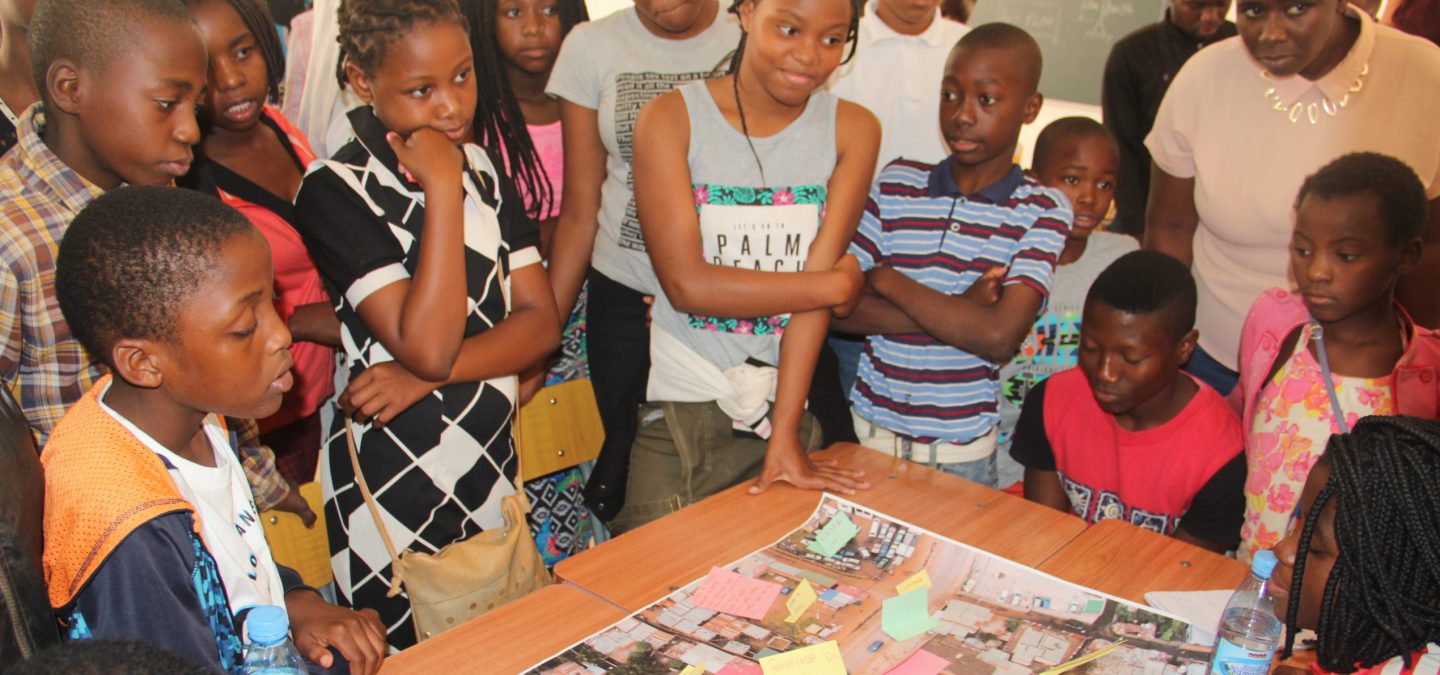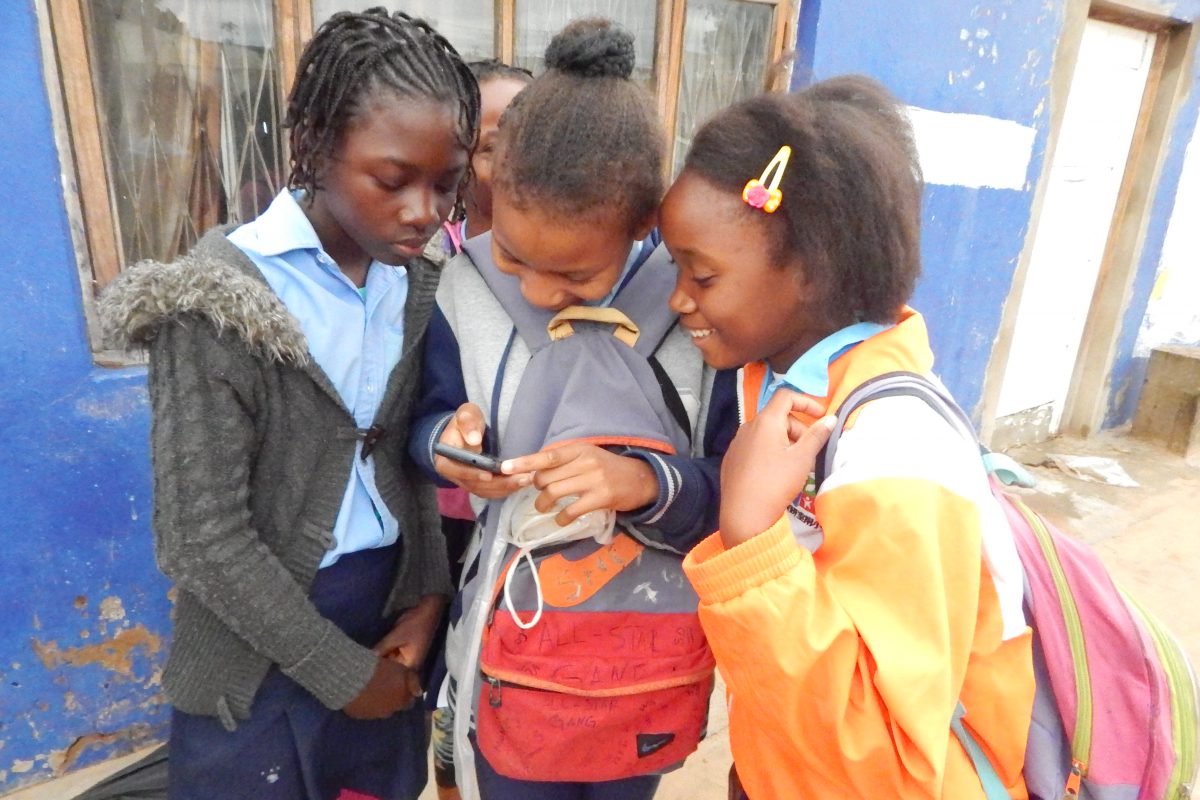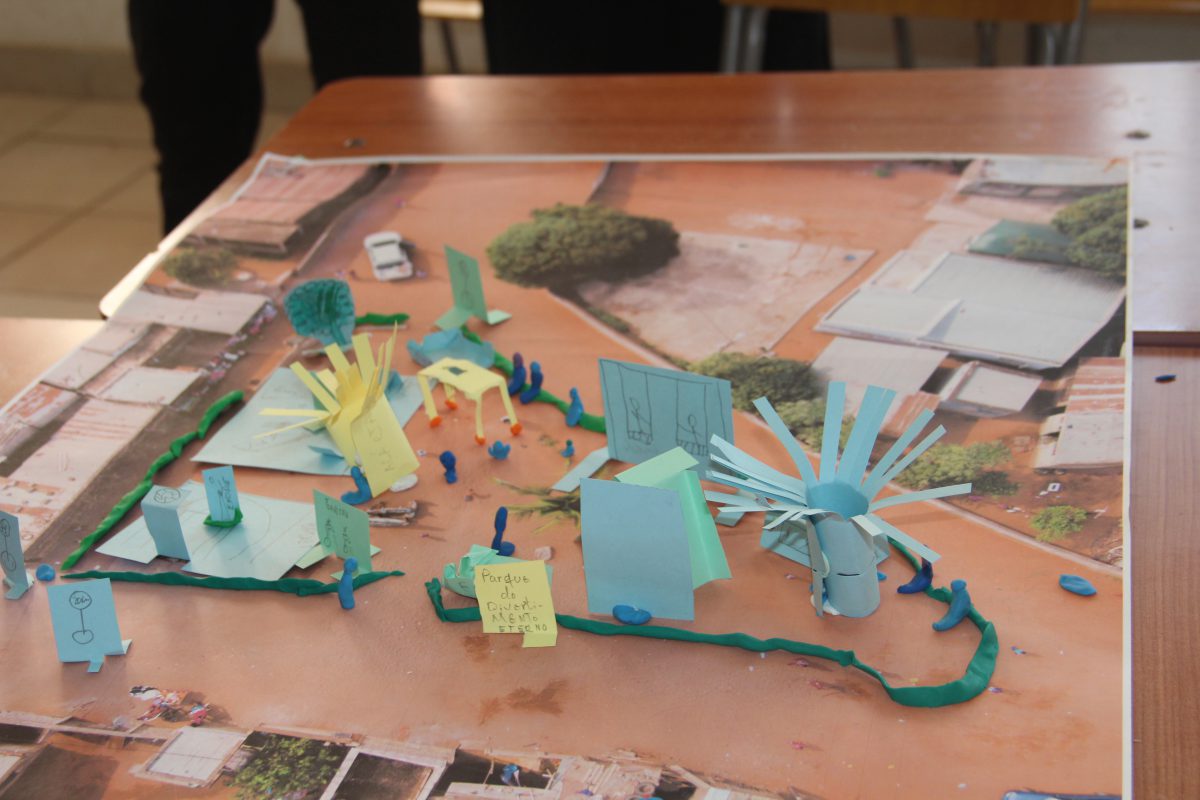
Keep up with our latest news and projects!

In Mozambique, more than half the population are children. Urbanisation in the country creates both a challenge and an opportunity to accommodate children’s needs and influence their rights. When cities strive to provide better access to public services and facilities and bolster economic growth, they still face challenging environments with specific risks and constraints. Specifically, in consideration of children, these endeavours often face new challenges, risks, and constraints for playing in public spaces.
Play is among the most essential elements of children’s lives. Due to the lack and shrinking of public space, in addition to contaminated areas, dangerous zones, and chaotic car routes, child-friendly space is under pressure. Maputo city is often denying outdoor play for its children similar to many other cities worldwide. With play, children are able to learn, develop and grow. Children not only play in playgrounds, but also in all parts of their neighbourhoods: their living quarters, around their home, their neighbour’s house, and all the way to their school.
Like many other cities worldwide, Maputo city also has several gaps in creating child-friendly focused urban settings, especially in its economically disadvantaged neighbourhoods. However, to narrow the gap, the Municipality of Maputo is working with UNICEF and UN-Habitat to involve children for its transformation and betterment of their urban setting.
This project explores new forms of promoting child engagement in the reflection and design of urban space in Maputo while using innovative tools to leverage their knowledge and opinions through an active participatory process. The objective is to ensure their voice is heard, thus influencing the decision-making process.
Urban planners, architects, decision-makers, and technical staff, in general, may be committed to including children’s needs regarding public space improvement projects, however, this is not always the case. As adults, it can be difficult to recollect the hardships faced during childhood with the passage of time. This is why opening the dialogue with children by using adequate tools is crucial to collect their views. Thus, instead of the usual approach consisting of “planning for children”, the initiative seeks to directly engage with children in the objective of conducting the planning process starting from data collection. The data collection includes their perception and opinions about the different areas in their neighbourhoods.
Children are involved in fun data collection using a smartphone application. During the fun data, children traced their routes from home to school, as well as, the spaces and spots they consider relevant in between using GPS.
The children’s urban walk is undertaken with the intention to robustly understand children’s challenges faced every day and exciting experiences along usual routes. To this end, children are grouped with their friends with whom they usually commute to school and back home together. Each group receives a phone with the installed application to map their everyday experiences and challenges along the different routes they take. They also document their everyday challenges, feelings, and opinions about the different public spaces or unique spots. During the data collection, children identified several places and spots including tree locations, sidewalks, streets, small public spaces, and a soccer field among many others. The application also helped them to easily capture multiple pictures of different places to help them explain their challenges more with pieces of evidence and proof using real-time information for decision-makers, professionals, and policymakers in urban planning.
Following the completion of the data collection, the children gather together to discuss and visually validate the data they have collected. During the visual validation, children used a set of pictograms with different feelings labelled to exactly express their different perceptions about the same spaces.
 Children during the participatory walks, each group was accompanied by an adult ensure a safe smooth process.
Children during the participatory walks, each group was accompanied by an adult ensure a safe smooth process.
The discussion gave the opportunity to better understand the result of the information gathered and further explore the features of what they considered essential for fun, safety, and well-being in the public spaces they use on a daily basis. This activity triggered a discussion with other children, encouraging them to explain motivations and choices of pictograms describing each public space.
 Children selected matching pictograms to describe the spaces they use as a soccer field in their neighbourhood.
Children selected matching pictograms to describe the spaces they use as a soccer field in their neighbourhood.
Based on what has been discussed during the validation, children used cardboard, glue, clay, and coloured pencil on aerial photographs to illustrate their ideas in order to transform different types of public spaces. This included streets of different sizes, squares, or other urban sites not yet build on all adapted with their imagination and design solutions.
Each group presented their existing design model to the plenary with an argument for each of the built elements they chose for improvement. They highlighted why and how to make them more safe and convenient for themselves based on their needs; more often bringing out-of-the-box solutions to the problems preliminary identified.
– Children could build an in-depth database which is very important for the better transformation of their neighbourhoods and cities.
– Children’s knowledge, challenges, and experiences of their neighbourhoods are often different than of the adults. Such information has high value to create inclusive neighbourhoods built on sustainability.
– The capacity and willingness of children have to be a part of their neighbourhoods transformation process starting a pre-planning and urban design process.
– The importance of digital technology to involve children in urban planning and city design, for a better future and urban settings.
– The project highlighted the importance of engaging with the local community as a whole when it comes to working with children. In this case, the project has been implemented with the support of a platform of local associations already very active at the neighbourhood level. In addition, activities have been largely broadcasted on the community-based radio to explain the objective and process of the project, to inform about the progress, as well as to raise awareness about the importance of child- friendly public spaces for a safe and vibrant neighbourhood.

Involving children in the planning process with an equally weighted voice allows neighbourhoods to be re-shaped into an inclusive living environment and the sustainable city to be further developed. To do so, children need to be given the various tools to express their needs and priorities comfortably. This information then feeds into the decision and policy-making process for urban planning, neighbourhood upgrading, and public space rehabilitation.
This article belongs to a series of stories about the city at eye level for kids! You can access the full book online in PDF or pre-order your hardcopy to be delivered to your home.
Get your book here